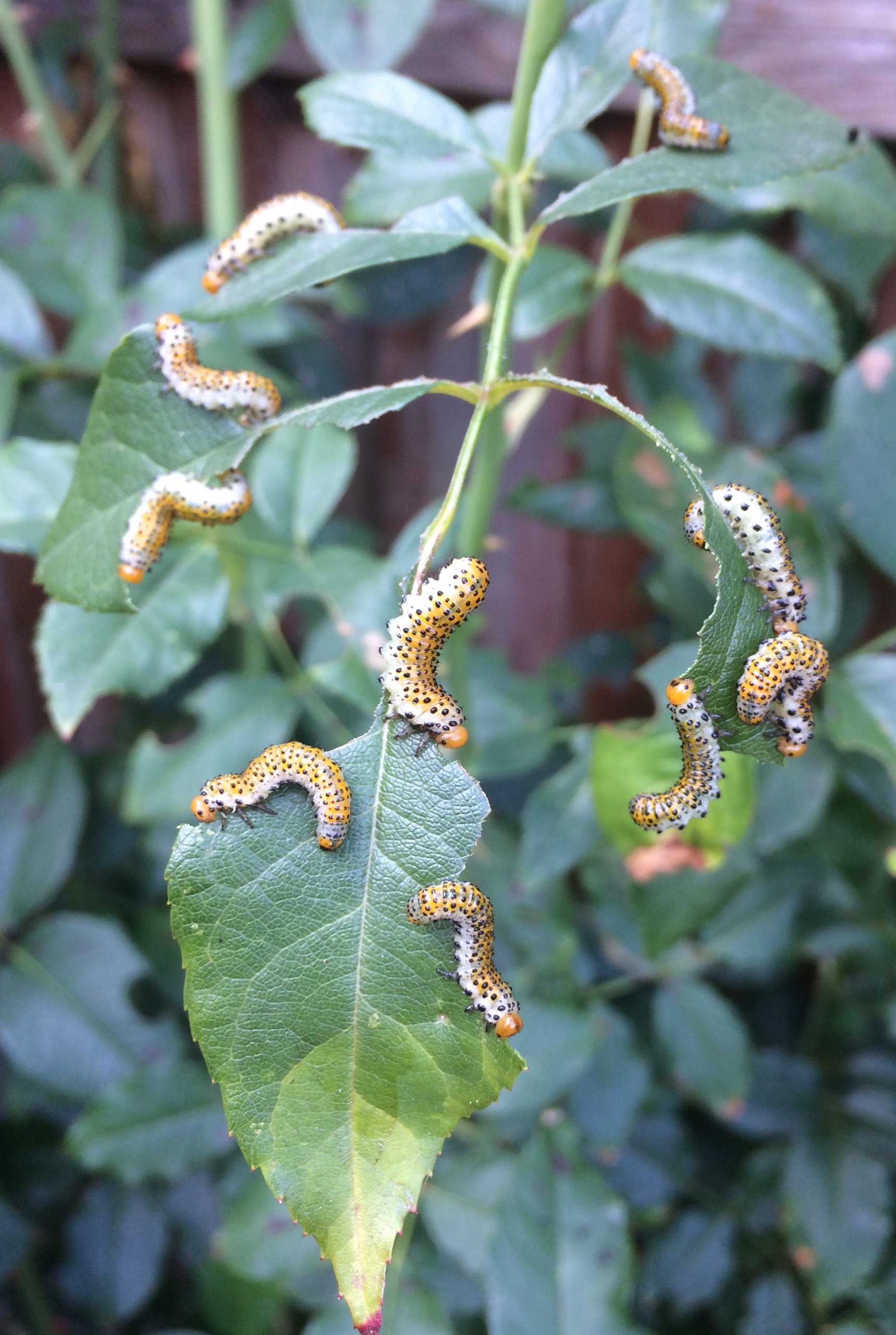
The Hungry Caterpillar
I’m writing this very short post today, mainly because it’s really based on a photograph that I took in my garden this lunchtime and I wanted to share it with you. About 5 months ago, I had to cut my rose bush in my garden right down because it had got completely out of hand and it wasn’t flourishing at all. By pruning it a couple of times a year, it enables the rose bush to bloom and look really healthy. There was hardly anything left when I finished cutting it down in April, but gradually over the past few months it has really grown; quite significantly in fact.
I decided to go and have a look at my rose bush this lunchtime as I mentioned and noticed a small pretty caterpillar on one of the leaves. And then, on a much closer inspection, I spotted another and another and so on and so on… There are loads of them! Now, this became a little bit of a concern because they are all munching quite happily on my rose bush and I was wondering if they’d be anything left by tomorrow morning! Upon investigation, I read that most caterpillars are completely harmless and form a vital part of the food chain supporting many animals. So I’m going to leave them, safe in the knowledge that they are eating really well, and I can watch them grow and change.
They are very pretty and fascinating to watch, and I keep popping down to the bottom of my garden to take another look.
If anyone can tell me the species of caterpillar in the photograph I’d really appreciate it?
X Pip



One Comment
Dick Cox
What a wonderful picture!
They are, of course, Arge Pagana, as many of Pip’s readers will confirm. Amusingly, I almost mistook these specimens for Arge Ochropus, in my eagerness to identify the less-common species! However, as I’m sure I don’t need to remind you, the pale hairs on the head of the Pagana (in contrast to the thick, dark hairs of the Ochropus) provide enough to distinguish between these exquisite larvae.
The Arge genus is almost exclusively found on roses – in fact, the common name has long been the ‘Large Rose Sawfly’. Of course, belonging to the insect order ‘Hymenoptera’, they are not flies at all, but non-stinging wasps, specifically of the suborder ‘Symphyta’. An adult Sawfly is around 1 inch in length, with a yellow abdomen, and a mainly-black thorax and head.
Of some interest is the species’ ‘ovipositor’, or saw-like appendage, with which it carves a channel into the stem of a rose, as a repository for clutches of eggs, twice per year. Easily spotted, these impose a blemish on what may otherwise be an impressive, healthy bush, the remedy for which can only be severe pruning. Many, no doubt, upon inspection of their carefully-tended bushes, have been horrified to find these larvae crawling within! So, next time you come upon a heavily-trimmed bush, spare a thought for its owner, for few things can account for such drastic measures.
Most active between March and August, Arge Pagana are prevalent in Leicester and Rutland, along with parts of the south of England.
Much fascinating information can be found at:
http://www.naturespot.org.uk/species/large-rose-sawfly